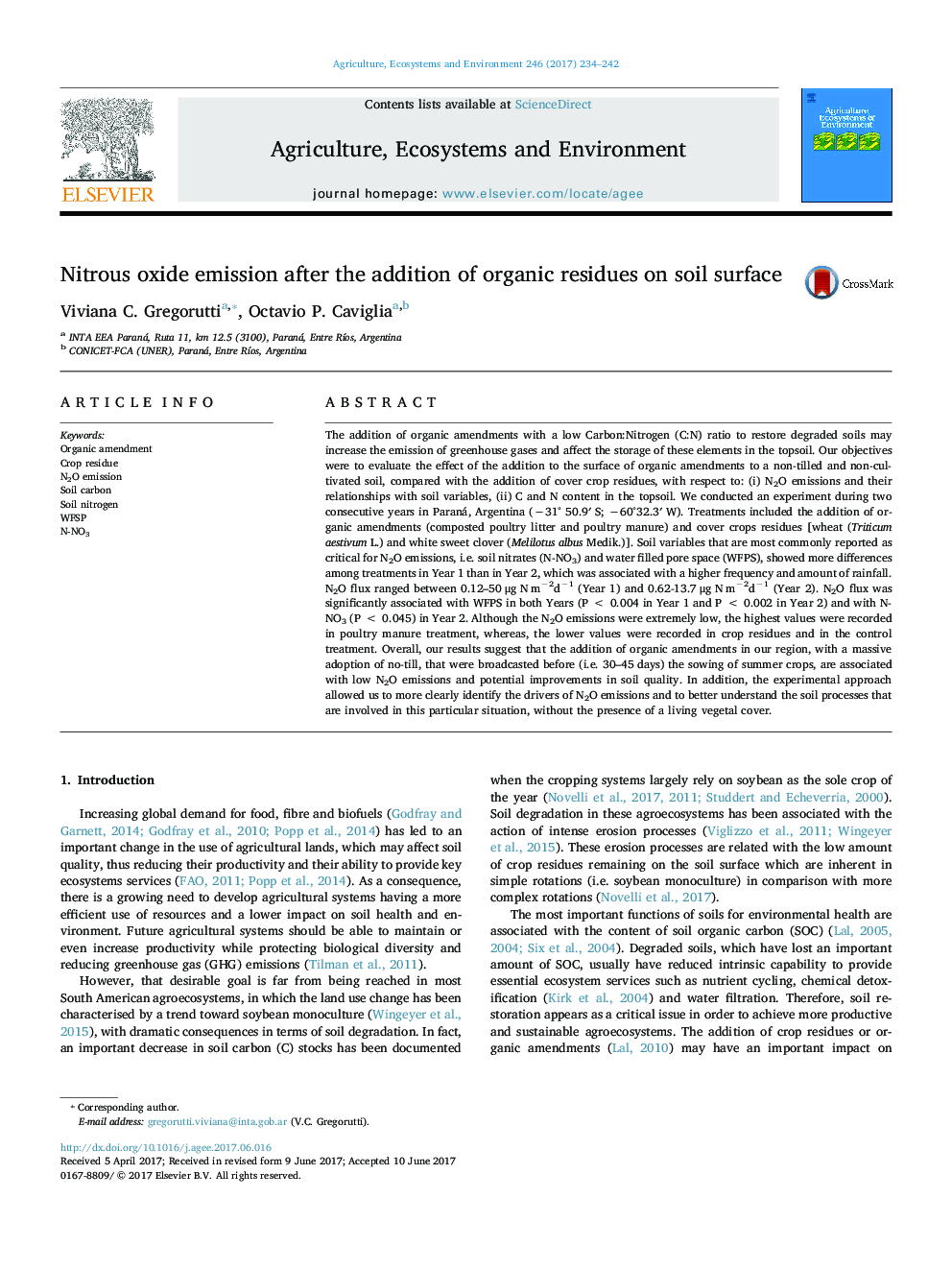| کد مقاله | کد نشریه | سال انتشار | مقاله انگلیسی | نسخه تمام متن |
|---|---|---|---|---|
| 5538046 | 1552006 | 2017 | 9 صفحه PDF | دانلود رایگان |
عنوان انگلیسی مقاله ISI
Nitrous oxide emission after the addition of organic residues on soil surface
ترجمه فارسی عنوان
انتشار اکسید نیتروژن پس از افزودن آلاینده ها در سطح خاک
دانلود مقاله + سفارش ترجمه
دانلود مقاله ISI انگلیسی
رایگان برای ایرانیان
کلمات کلیدی
موضوعات مرتبط
علوم زیستی و بیوفناوری
علوم کشاورزی و بیولوژیک
علوم زراعت و اصلاح نباتات
چکیده انگلیسی
The addition of organic amendments with a low Carbon:Nitrogen (C:N) ratio to restore degraded soils may increase the emission of greenhouse gases and affect the storage of these elements in the topsoil. Our objectives were to evaluate the effect of the addition to the surface of organic amendments to a non-tilled and non-cultivated soil, compared with the addition of cover crop residues, with respect to: (i) N2O emissions and their relationships with soil variables, (ii) C and N content in the topsoil. We conducted an experiment during two consecutive years in Paraná, Argentina (â31° 50.9â² S; â60°32.3â² W). Treatments included the addition of organic amendments (composted poultry litter and poultry manure) and cover crops residues [wheat (Triticum aestivum L.) and white sweet clover (Melilotus albus Medik.)]. Soil variables that are most commonly reported as critical for N2O emissions, i.e. soil nitrates (N-NO3) and water filled pore space (WFPS), showed more differences among treatments in Year 1 than in Year 2, which was associated with a higher frequency and amount of rainfall. N2O flux ranged between 0.12-50 μg N mâ2dâ1 (Year 1) and 0.62-13.7 μg N mâ2dâ1 (Year 2). N2O flux was significantly associated with WFPS in both Years (P < 0.004 in Year 1 and P < 0.002 in Year 2) and with N-NO3 (P < 0.045) in Year 2. Although the N2O emissions were extremely low, the highest values were recorded in poultry manure treatment, whereas, the lower values were recorded in crop residues and in the control treatment. Overall, our results suggest that the addition of organic amendments in our region, with a massive adoption of no-till, that were broadcasted before (i.e. 30-45 days) the sowing of summer crops, are associated with low N2O emissions and potential improvements in soil quality. In addition, the experimental approach allowed us to more clearly identify the drivers of N2O emissions and to better understand the soil processes that are involved in this particular situation, without the presence of a living vegetal cover.
ناشر
Database: Elsevier - ScienceDirect (ساینس دایرکت)
Journal: Agriculture, Ecosystems & Environment - Volume 246, 1 August 2017, Pages 234-242
Journal: Agriculture, Ecosystems & Environment - Volume 246, 1 August 2017, Pages 234-242
نویسندگان
Viviana C. Gregorutti, Octavio P. Caviglia,
